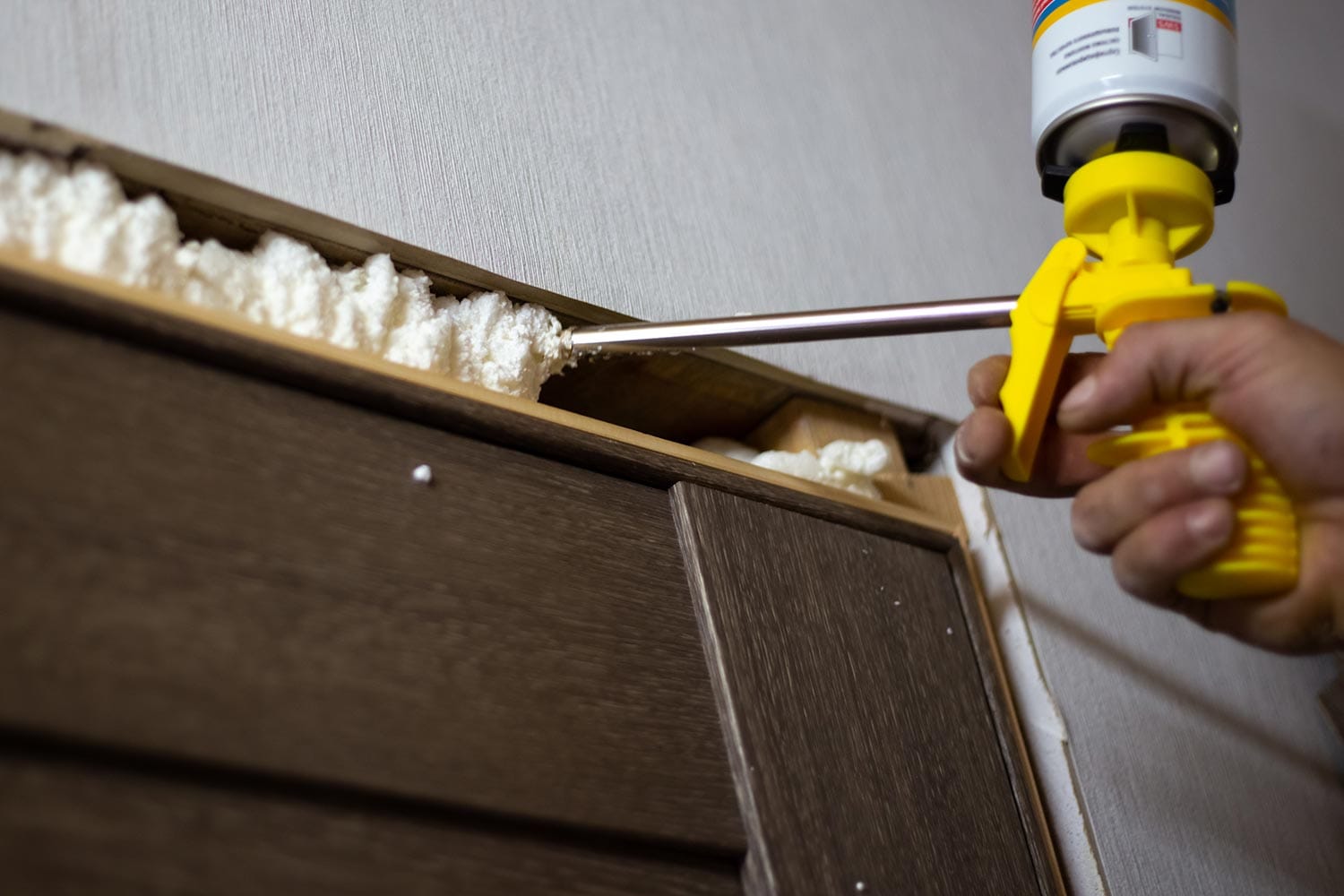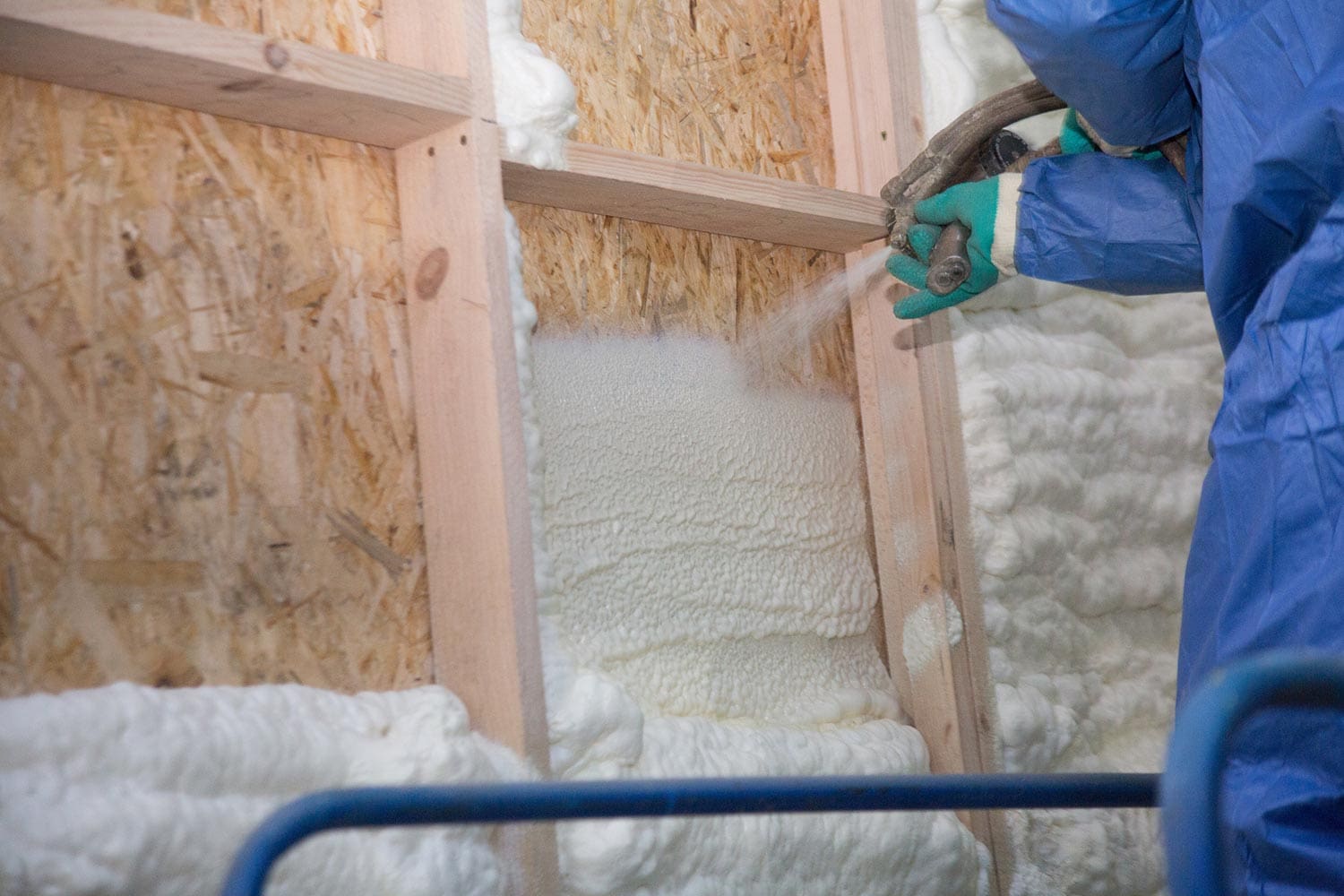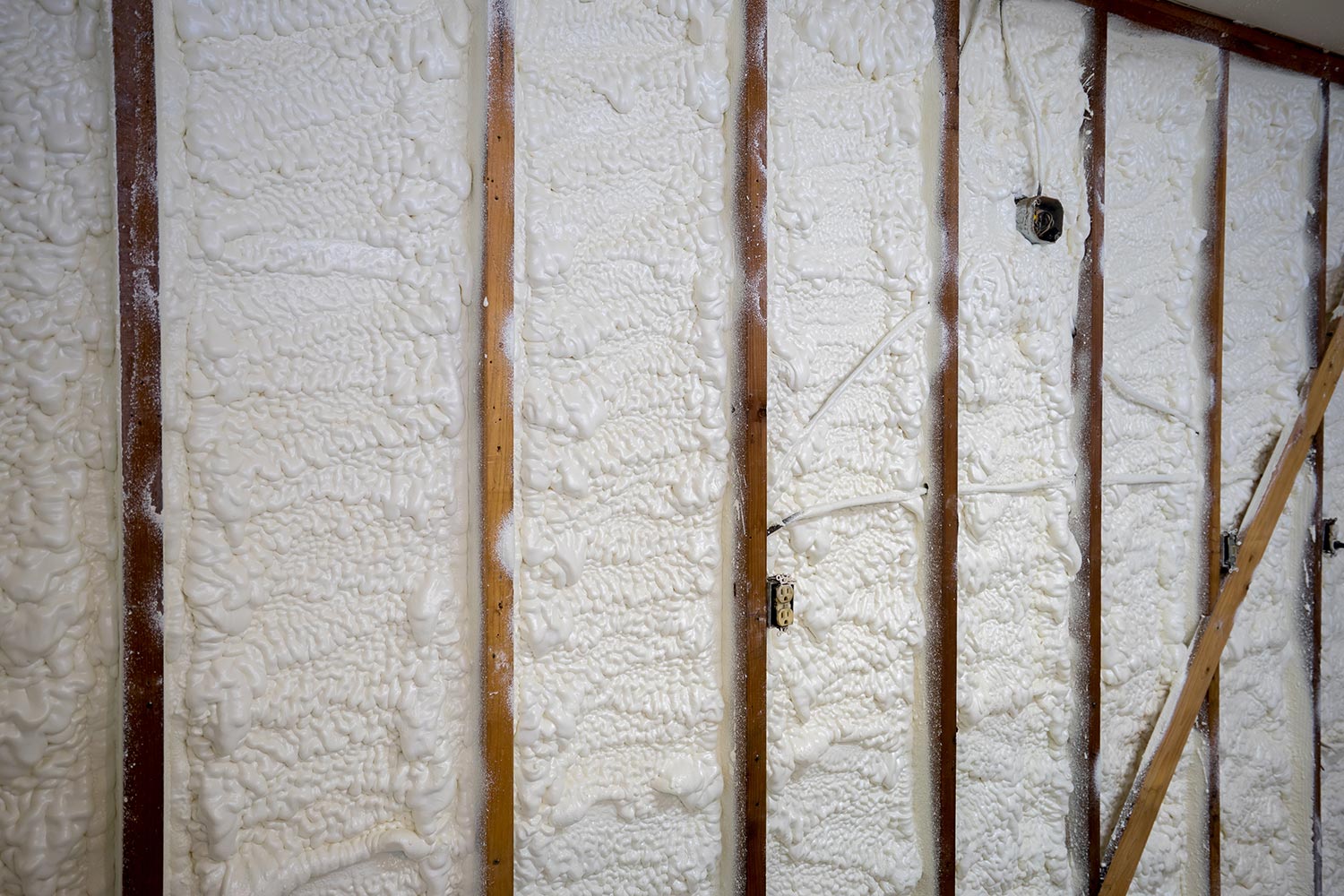As temperatures begin to change, it's more important than ever to keep your home cozy. If you've searched around a bit, you might find that many claim foam insulation to be one of the best types. It's a great option! But, therein lies the problem of installation; can foam insulation be installed in existing walls? If that's what you're trying to figure out, let's take at your options!
Installing spray foam insulation in existing walls is possible. However, there are a few considerations to make.
- First, the walls need to be empty. Meaning, there can't be any pre-existing insulation present when you want to inject spray foam.
- Secondly, you will need attention to detail down to the T. If you're not accurate, the spray foam can leak into unexpected areas.
Of course, there's much more to cover when it comes to installing spray foam insulation. It's one of those topics where you want to pay attention closely. Additionally, there's still the aspect of considering your options. We go over these topics in depth. So, if you'd like to find out more, keep reading ahead.

Installing Spray Foam Insulation in Existing Walls
As we mentioned, there are some concerns you should be familiar with if you're opting to install spray foam inside existing walls. The first would be identifying if your walls are empty or have pre-existing insulation material. In most cases, injecting spray foam into a wall with no obstructions will be the easier path to choose.
However, there are some situations where the homeowner might decide that the existing insulation isn't adequate. So, they'll opt to install spray foam insulation to remedy temperature problems. In this situation, the pre-existing material inside the wall will most likely be fiberglass. It's acceptable to install spray foam insulation over existing fiberglass.
Fiberglass in the cavity can be easily removed. Additionally, the spray foam will compress it and fill up any empty space. If you'd like to have a deeper explanation and a real-time example, here's a YouTube video talking about this topic:
Is Foam Insulation DIY-safe or Are Professionals Needed?
Still, accuracy and attention to detail are crucial aspects of filling in an existing wall. It depends on the type of spray foam you will install. Some of them can expand as much as 100 times the volume of their liquid foam. If you're not paying attention closely, you'll spray too much spray foam for a wall to handle.
As a result, it can push outward towards the wall. Consequently, it will leave damage on the wall and potentially leak into unexpected places. For this reason, you'll want to seek a professional to do the job for you.
However, if you're up for the task, you might want to know what the process of installing spray foam into existing walls entails. To be straightforward, it isn't an easy task. The standard method of injecting spray foam into a closed wall is through small holes in the wall. They will be about 1/2-inch to 2 inches in diameter.
Of course, if you want to see this all in action, a visual representation will give you a rough idea of what you'll have to do. So, here's a YouTube video showing how to go through the process on multiple types of material:
Bringing It All Together
As we can see, there's no way to install spray foam insulation without tearing up the wall, even if it's minimal tearing using holes. In other words, you'll have to open up the wall in some way. Regardless, it's up to you to figure what fits your situation the best.
How Much Does It Cost to Foam Insulate Existing Walls?

The cost of insulating your existing walls depends on a few factors. The main concern will be the size of the surface area. If your home has multiple stories, it can also factor into the cost of installation.
In most cases, professionals will work outside of your home. So, the type of siding you have adds to the cost. The more difficult surfaces they will have to work with are wood and brick. On the other hand, material like vinyl will be easier to work with.
Regardless, the installation price will cost anywhere from $4,000 to $8,000. Despite going over all the contributing factors for the cost, the size of the area is what will eat up most of your budget. So, if you're planning on doing a big project, you might have to consider other options.
Are DIY Spray Foam Kits Worth It?
DIY projects are like a double-edged sword. There will be pros and cons of doing this project yourself or hiring a professional to do the job. However, in this situation, the pros for hiring a professional might outweigh the pros of doing it yourself.
As many forum users suggest, spray foam installation can get messy. It's especially the case if you're not familiar with what you're doing. Instead of purchasing a kit, many users recommend you look around and get some quotes.
The Potential for the Project to Go Wrong
If you want an idea of what can go wrong, let's go over some possible situations. The first concern would be informing yourself of the two types of spray foam insulation. There's closed cell spray foam and open cell. In most situations, many homeowners might buy the wrong kind of foam for their project. And, this is only the start of the problems.
Next, the problem with the spray foam can begin before you start applying it. As you might already know, spray foam comes in two parts. They are chemicals that you will need to mix to get the result you would typically want.
From here, you might take a guess and assume that you need to account for specific requirements when mixing the two chemicals. And, you would be correct in that assumption. Aside from requiring proper safety equipment for installation, it also needs precise mixing in perfect conditions.
What Happens if You Get an Incorrect Mix
Incorrect mixing can lead to a lot of potential disasters. Two of the immediate signs of improper mixing are evident right away. The first would be the smell it produces. Improper spray foam will give off a fishy smell as a result of off-gassing.
While it might not seem like a big deal, prolonged exposure to off-gassing chemicals can lead to serious health problems. The second sign would be improper insulation. Meaning, you won't notice any difference after installation. Regardless, the worst possible scenario is that it will make your home unlivable.
So, if you're going to do the project yourself, you should leave the foam installation to the professionals. Even in this case, you'll want to make sure the people you hire are also well-reputed.
How Many Square Feet Does a Spray Foam Kit Cover?

If you know what you're doing and decide you have what it takes to do the job, you'll have to figure out how much of the spray foam you'll need. So, how many square feet does a spray foam kit cover?
In this situation, it depends on the kit you purchase. Some are rated to cover around 600 board feet. If you're not familiar with this unit of measurement, one board foot is equivalent to one square foot at 1-inch thick. Thickness refers to the amount of spray foam you will use.
To find out how much foam you will need, you need to multiply the square feet of an area by the thickness of the foam you want to spray. For example, if you're applying spray foam to 1,000 square feet of area and you want a 2-1/2-inch layer of foam, the total you will need is 2,500 board feet of spray foam.
Is Open Cell or Closed Cell Spray Foam Better?

After finding out how much spray foam you need, it's time to decide which option is better for your situation. In that regard, it depends a lot on what you want out of it. There isn't a true winner between these two types of spray foam.
Open-cell spray foam costs less because of how much it expands. It's lighter, less dense, and expands about 100-120 times its size. Though, it comes at a trade-off. Open-cell spray foam has a lower R-value than closed-cell foam.
On the other hand, closed-cell spray foam is the costlier option. It's denser and holds a higher R-value than open-cell spray foam. As some suggest, its closed-off cells make it acceptable to use in areas prone to flooding. As you can guess, since it's a dense foam, you'll need more of it to cover an area. It only expands about 33 times its size.
What Are the Disadvantages of Spray Foam Insulation?
While searching for insulation options, many will claim spray foam insulation is one of the best choices. While that may be true, there are also some downsides that you might want to know. As we mentioned above, there's always a risk before even applying the foam.
The same situation can occur even if you hire professionals to do the work. If you or the contractor fails to mix the two chemicals correctly, there's a potential to make your home unlivable. The reason being that improperly cured spray foam emits gasses permanently until it is removed.
Additionally, spray foam is not a one-time solution. Depending on your area, it has the potential to shrink. It happens in regions that have extreme temperature differences. When spray foam shrinks, the standard solution is to tear out the original application to install new spray foam or something new.
How Do You Insulate an Existing Wall Without Removing Drywall?
If you don't want to remove drywall, injecting foam insulation is the alternative that might interest you. To install insulation, a contractor will make holes that they would inject foam through.
After the installation is over, they'll plug in the holes with some kind of material. Finally, they'll paint over it to make it look as if there were no holes there in the first place! In the worst case, the contractor will plug in the holes with drywall mud - and you'd have to sand and paint it to make your walls look good as before.
Regardless, if you want an option that involves the least amount of damage to your drywall, this is the best as it gets. As a reminder, this will cost anywhere from $4,000 to $8,000.
Final Takeaway
Maintaining a home will always come with headaches from time to time. Luckily, there's a wide variety of sources to help you make your decisions. Regarding installing insulation, you'll always want to consult with a professional to determine the best course to take for your situation! We hope you found the information above helpful.
Before you go, do you have other foam insulation concerns? Now that you know it has the potential to shrink, are you also concerned if it shrinks over time? We go over this topic in-depth in our post here.
Additionally, are you wondering if foam insulation requires a vapor barrier? You can find out more by checking out our post here. That's all for now. Best of luck in your search for adequate insulation!
